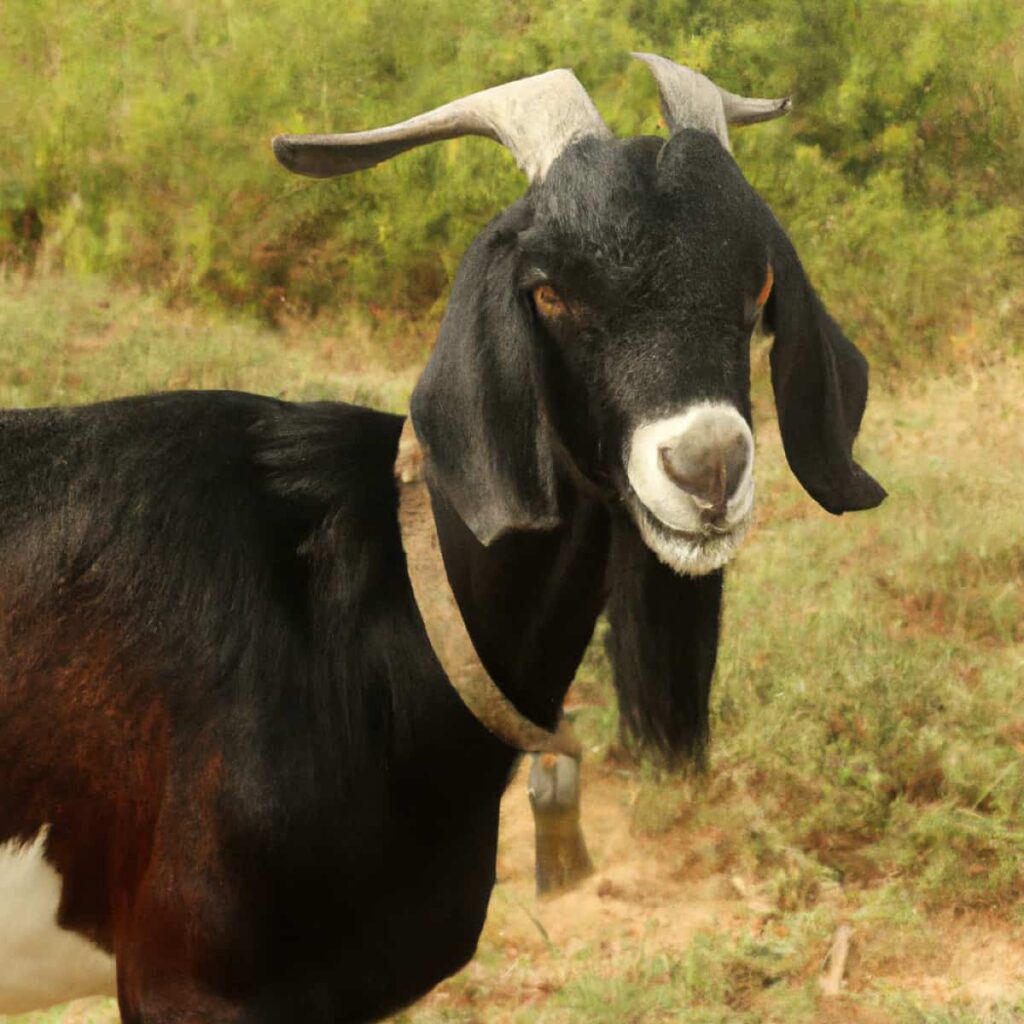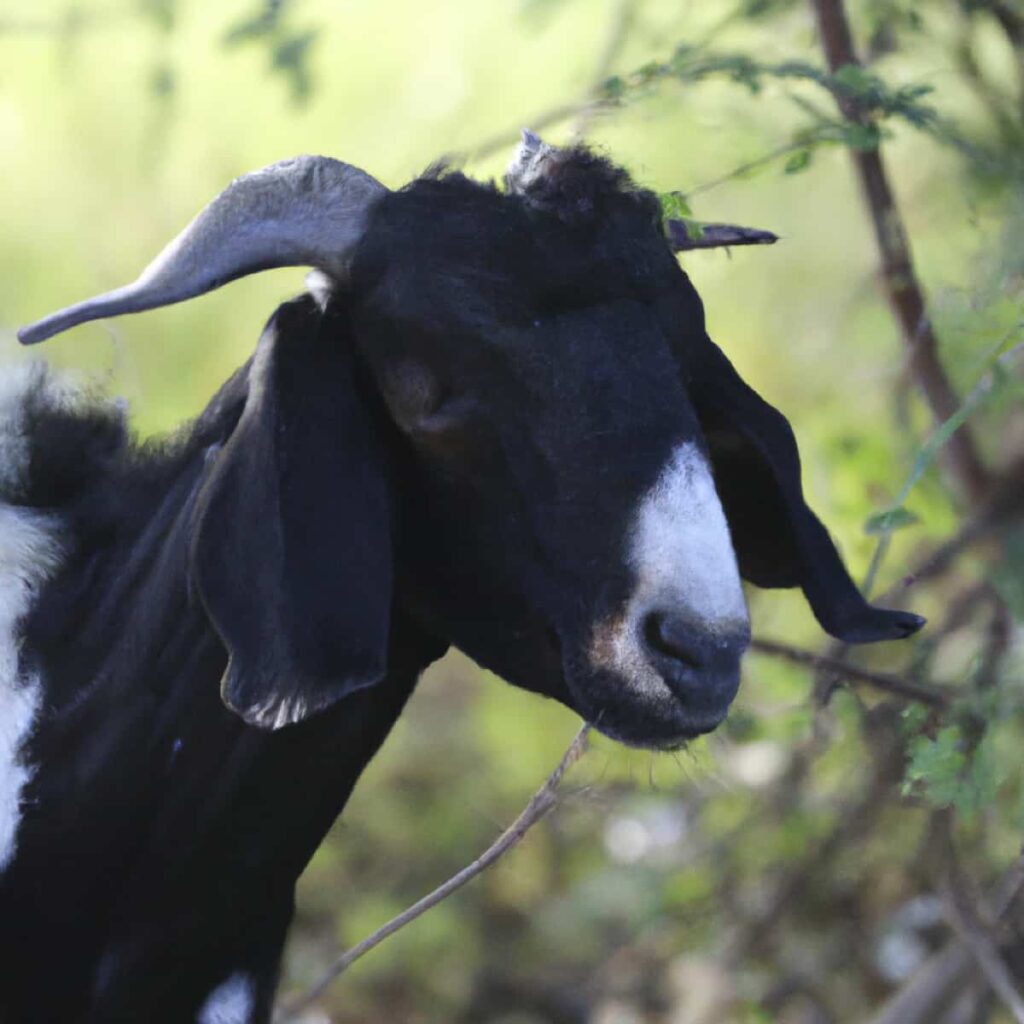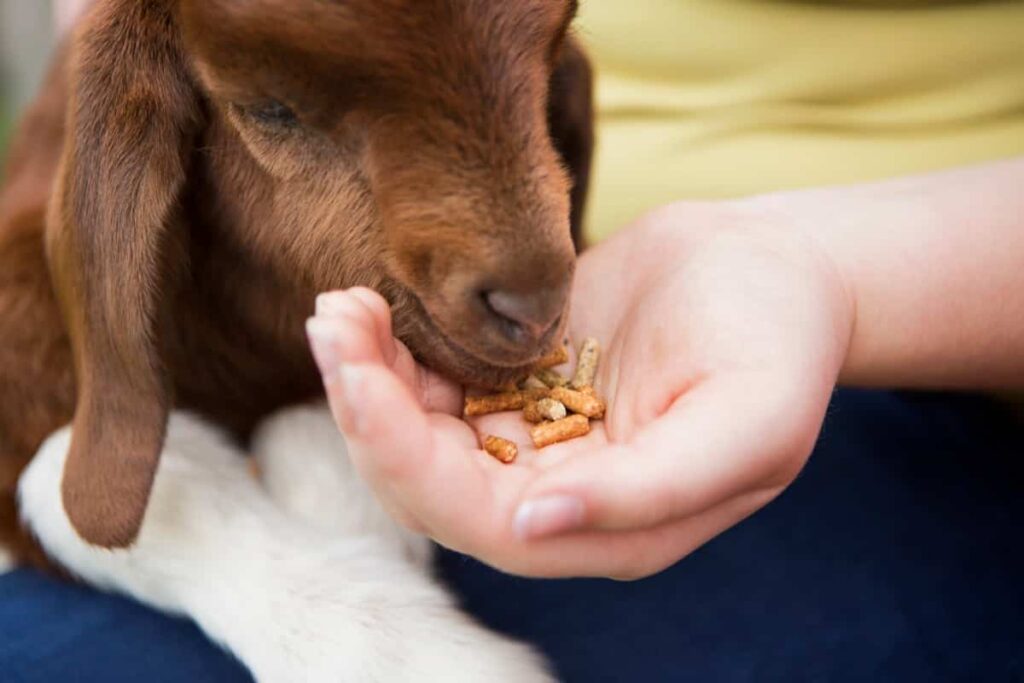Mehsana goat farming has become increasingly popular. This dual-purpose goat breed is gaining popularity due to its high meat and milk production. Mehsana goats are known for being able to withstand extreme temperatures, making them ideal for farms in different regions across India.

Benefits of Mehsana Goat Farming
- Mehsana goats have lower mortality rates than other breeds, meaning less risk of losses for farmers. They also have high reproductive rates and reach maturity early, making breeding programs more efficient.
- Moreover, Mehsana goat milk contains higher nutritional values and is easier to digest.
- Mehsana goats are adaptable to different climatic conditions. These goats can survive in harsh weather conditions such as extreme heat or cold temperatures, making them ideal for farming in different regions.
- Mehsana goats are more resistant to common diseases than other breeds, requiring less medical attention.
Housing and Sheltering for Mehsana Goats
- Mehsana goats require adequate housing to protect them from harsh weather conditions, predators, and other external factors that may harm or cause animal stress. The shelter should be well-ventilated and provide enough space for each goat.
- The ideal housing for Mehsana goats should have a concrete floor. The shelter’s walls can be made of wood, bamboo, or other strong enough materials to withstand regular wear and tear.
- Building a suitable shelter is crucial in ensuring optimal health for Mehsana goats on your farm. Regular maintenance practices such as cleaning their living quarters daily ensure overall cleanliness contributing towards keeping these dairy breeds happy.
Mehsana Goat Characteristics
- Mehsana goats are a unique breed of domestic goats raised in the Gujarat state of India for centuries. These goats are known for their dual-purpose nature, as they are excellent sources of both meat and milk.
- Another distinguishing feature of this breed is their short coat, which comes in various colors ranging from white, black, and brown to grey. They also have distinctively curved horns that add beauty to their overall appearance.
- Mehsana goats adapt well to different environmental conditions, making it possible for farmers worldwide to raise Mehsana Goats successfully.
Mehsana Goat Weight
Mehsana goats are known for their dual-purpose capabilities, which means they can produce meat and milk. Their unique characteristic sets them apart from other domestic goat breeds – their weight. A mature buck Mehsana goat weighs around 37 kg, while the doe weighs about 32 kg. This makes them ideal for those who want to raise goats for their milk and meat production.
Essential Requirements for Mehsana Goat Farming
Mehsana goat farming requires it to thrive and produce quality meat and milk. One of the key requirements is proper housing and sheltering. A suitable house should be constructed with enough space to accommodate all goats comfortably. Feeding and nutrition are also crucial factors in Mehsana goat farming. Goats require a balanced diet that includes hay, silage, grains, and freshwater. The feeding program should be consistent, providing adequate nutrients throughout the year.
In case you missed it: Murcia Granada Goat Breed: A Comprehensive Information Guide

Moreover, ensuring good sanitation practices is also necessary when raising Mehsana goats. Regular cleaning of their living quarters prevents many common diseases from spreading among the animals. The healthcare management of these goats demands attention, as they can get affected by specific diseases like Foot-and-Mouth Disease (FMD) or Peste des Petits Ruminants (PPR). Therefore, regular vaccination programs must be implemented to keep them healthy.
Mehsana Goat Appearance
- One of the striking features of Mehsana goats is their unique appearance. These goats are medium-sized with compact and well-muscled body that gives them an attractive look. The breed has a distinctively curved nose, one of its most distinguishing features.
- Mehsana goats have short hair in varying colors, including white, black, brown, and gray.
- These goats possess a pair of sharp horns that start growing from the top of their heads at an early age. Bucks usually have more massive horns than does; however, some farmers prefer to dehorn them for safety reasons.
- Their legs are strong with hooves adapted to dry terrain making these animals ideal for grazing on harsh terrains found in arid regions.
Feeding and Nutrition Requirements for Mehsana Goats
- Proper feeding ensures the growth and development of goats and helps attain maximum production potential. The nutritional requirements vary based on age, weight, sex, pregnancy status, lactation status, environmental conditions, and management practices.
- Mehsana goats need a balanced diet containing protein-rich concentrates such as soybean meal, groundnut cake, and fibrous roughages like berseem or clover hay. Fresh green fodder must be given regularly to meet the requirements for vitamins and minerals.
- Goats require clean drinking water available all day long. Clean water prevents dehydration and improves digestion in Mehsana goats.
- Overfeeding should also be avoided as it can lead to obesity which poses significant health risks for these animals. Feeding too little can stunt their growth or cause malnutrition resulting in reduced productivity.
Common Diseases and Treatment in Mehsana Goats
- Mehsana goats are known for being hardy and adaptable, but like any other animal, they can fall sick due to various reasons. Farmers need to be aware of the common diseases that affect Mehsana goats to prevent or treat them promptly.
- One of the most common health issues in Mehsana goats is diarrhea, which can be caused by various factors such as bacterial infections, parasites, or poor nutrition. Symptoms include loose stools, dehydration, and loss of appetite. The treatment involves rehydration therapy with electrolytes and antibiotics if necessary.
- Another disease that affects Mehsana goats is pneumonia, which can be caused by exposure to cold temperatures or viral/bacterial infections. Signs include coughing, fever, and labored breathing. Treatment involves antibiotics, anti-inflammatory drugs, and supportive care, including keeping the goat warm and dry.
- Foot rot is another condition that Mehsana goat farmers should watch out for. It’s commonly transmitted through wet bedding conditions or contaminated pasture areas leading to painful swelling between toes and causing limping gait in affected animals. Prevention measures such as clean housing facilities and timely foot trimming will keep this issue at bay.
- Other illnesses in Mehsana goats include mastitis (inflammation of mammary glands), tick-borne diseases like anaplasmosis & babesiosis, regular hygiene maintenance prevention techniques, and prompt veterinary consultation when required.
In case you missed it: LaMancha Goat Breed: A Comprehensive Information Guide

Conclusion
The Mehsana goat is a highly valuable domestic breed that originated in the Gujarat state of India. It is one of the most sought-after breeds due to its dual-purpose nature, which makes it exceptional for meat and milk production. Investing in Mehsana goat farming promotes sustainable agriculture as they require minimal resources such as food and water while providing maximum yield with proper care management.
- Goat Milking Practices and Equipment: A Beginner’s Guide
- Goat Farming for Fiber: Producing Mohair and Cashmere
- Maximizing Goat Milk Production: Tips for Dairy Goat Farmers
- Goat Farming as a Family Business: Strategies for Success
- Profitable Kenya Goat Breeds for Commercial Dairy and Meat Business
- Unlock the Secrets of Oberhasli Goat: Discover Raising and Management Practices
- Ultimate Guide to Myotonic Goats: Explore Profile to Raising
- Unlock the Secrets of Rove Goat: Discover Management Practices
- Ultimate Guide to Malwa Goat: Explore from Origin to Management Practices